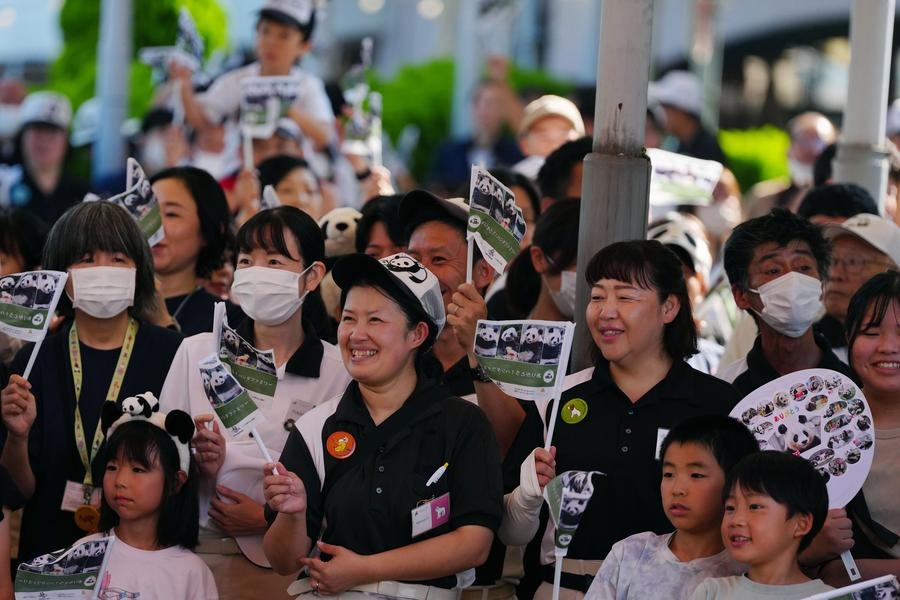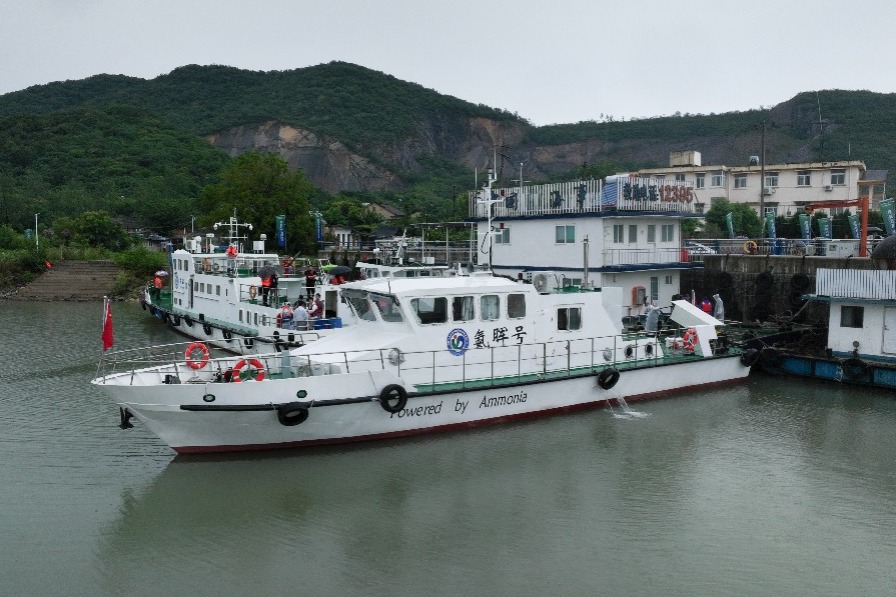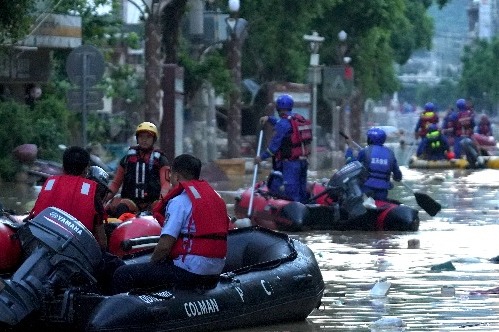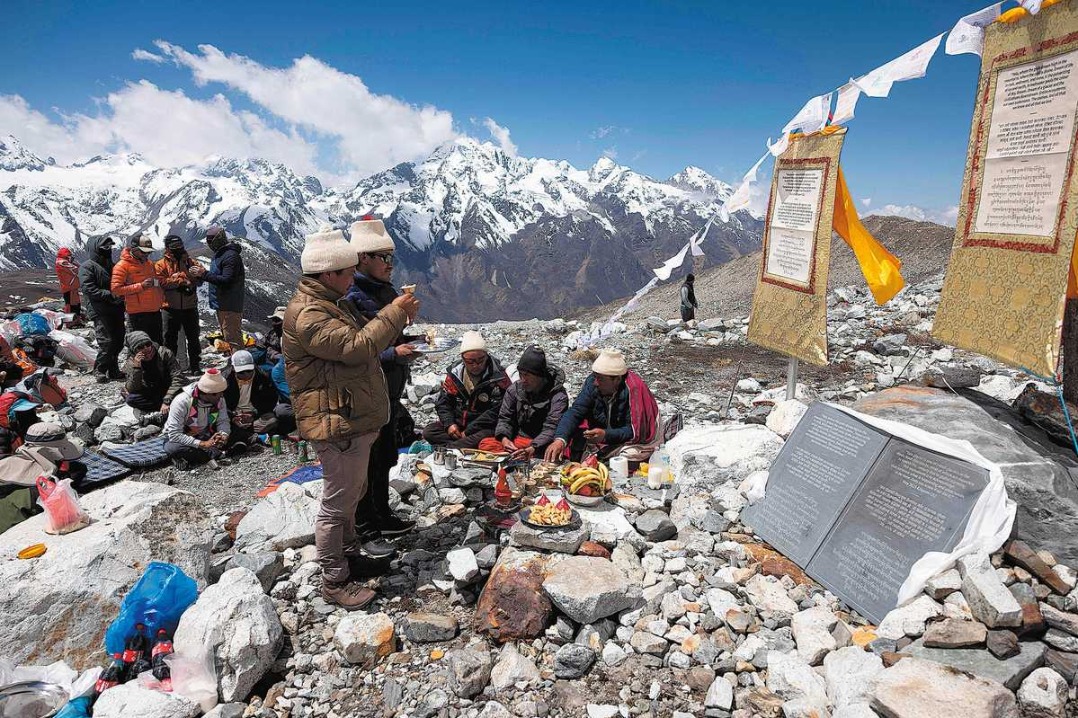The Problem of Whitsun Reef

More than a month has passed since a statement relating to the presence of Chinese fishing vessels at Whitsun Reef was released by the Philippine Coast Guard and the National Task Force for the West Philippine Sea (NTF-WPS). As time drags on, this "tempest-in-a-teacup" issue has seemingly been hyped up, which could potentially trigger an escalation of tensions. More active efforts are needed by China and the Philippines to manage the issue.
The standoff
Whitsun Reef, a large shallow coral reef, is located at the northeast of the Union Banks and Reefs claimed by both China and the Philippines. It belongs to the Spratly Islands and is called Niu’e Jiao by China and Julian Felipe Reef by the Philippines. Its boomerang shape provides a natural shelter for fishing boats away from storms and waves.
In response to statements by the NTF-WPS, the Philippines’ Department of National Defense and the Department of Foreign Affairs, the Chinese embassy in Manila and China’s Ministry of Foreign Affairs clarified China’s position. The verbal interactions demonstrated their differences on the issues of sovereignty and sovereign rights, the nature of the Chinese boats and possible paths to resolution.
The Philippines stated that since the reef is located approximately 175 Nautical Miles west of Palawan in the Philippines, it is within the exclusive economic zone of the Philippines according to the 2016 South China Sea arbitration award, and so the Philippines enjoys the exclusive right to any resources therein, living and nonliving. China reiterated its sovereignty over Niu’e Reef, which is part of China’s Nansha Islands. The waters around Niu’e Reef have been a traditional fishing ground for Chinese fishermen. China’s Ministry of Foreign Affairs further emphasized through a spokesman that the 2016 arbitration award is "illegal, null and void," and China firmly opposes any claims or actions based on it. He further stated that China’s sovereignty, rights and interests in the South China Sea "have been formed throughout a long course of history and are consistent with international law."
The Philippines believed that the crews of the Chinese fishing boats were made up of militia. Its defense secretary further stated that their activities were a "clear provocative action of militarizing the area." China confirmed that the vessels were fishing boats, which took shelter near Niu’e Jiao in rough sea conditions.
The Philippines called on China to "immediately recall these boats" and said it would pursue the issue as part of its overall national security policy. China warned about "speculation" over "maritime militia vessels," which was detrimental to the situation and hoped that the issue could be handled in "an objective and rational manner."
Political players and tactics
With developments in the standoff, there appeared some obvious features different from the previous China-Philippine maritime disputes.
First, the tactics used by the Philippines seem to be more carefully planned. While law enforcement forces, such as the Coast Guard and Task Force are at the forefront, closely following the activities at sea, the Philippine defense department expressed strong support for law enforcement and said the Chinese fishing boats were militia vessels that intended to occupy more features in the area. Meanwhile, its foreign affairs department quickly lodged protests, summoned the Chinese ambassador and increased the frequency of protests. The Trade Union Congress business group and university professors announced their support for the defense and foreign affairs departments and called for a more decisive foreign policy and national security stance. As the whole-of-nation approach is ongoing, the China threat theory has been hyped.
Second, constraint was displayed at the operations front. Compared with the 2012 standoff over Scarborough Shoal, when a Philippine naval ship was dispatched to the scene intending to seize Chinese fishing boats, law enforcement ships were used this time. After one media team sailed into the area and was chased away by China’s Coast Guard, the media were required by the Philippine military to "exercise prudence" in their reporting.
Further, President Rodrigo Duterte’s position played a key role in determining the Philippines’ reaction. On April 6, his spokesman commented that "we will continue to resolve the issues through diplomatic channels and through peaceful means." He added that differences with China would not define the bilateral relationship or create an obstacle to the overall positive trajectory of relations. During his "Talk to the People" on April 19, Duterte reiterated his pragmatic position over the dispute and relations with China — to avoid war and remain friends.
Third, the 2016 arbitration award continues to complicate the bilateral process of managing maritime disputes. While the Philippines has repeatedly invoked the award to condemn the presence of the Chinese vessels, China persists in its position of non-recognition and non-acceptance. This poses an obstacle to reaching a final resolution. An "agree to disagree" tactic would be practical and realistic under the current circumstances.
Fourth, domestic politics within the Philippines is at play, further hyping the situation. With the presidential election to be held next year, opposition parties and candidates are making use of the incident to attack Duterte. He has been labelled as "defeatist." A recent survey found that his daughter Sara Duterte, the mayor of Davao, tops the popularity list of candidates.
Fifth, the involvement of the United States remains a factor of concern. The Trump administration clarified that the 1951 U.S.-Philippines mutual defense treaty applies to the South China Sea. Taking into consideration the strategic background of the China-U.S. rivalry, China’s maritime dispute with the Philippines could be a card for the U.S. to play to bring the Philippines to its side under its free and open Indo-Pacific strategy, which is said to target China. The U.S. has stated its support for its ally, the Philippines, relating to Whitsun Reef. As early as March 28, the U.S. secretary of state said that the U.S. would "stand with our ally the Philippines in the face of the PRC’s maritime militia amassing" at Whitsun Reef.
The looming danger
If any of the above destabilizing factors gets out of control, tensions may escalate. Of particular note is how the U.S. will play this card under Biden’s China policy.
Since the Biden Administration took office, it has become clearer that the United States has renewed its efforts to build up an alliance network. The Philippines figure prominently in U.S. strategy as an ally, to demonstrate American soft power. The U.S.-Philippines alliance can only function with a mutually agreeable visiting forces agreement, but for the U.S., Duterte’s position on the VFA weakens the deterrent effect of the mutual defense treaty vis-a-vis China. The current standoff at Whitsun Reef might be used to add pressure on Duterte to resolve this impasse. The latest flap could help the opposition in the Philippines push Duterte toward a more confrontational stance against China. This is much to the advantage of U.S. interests and may help the pro-U.S. Philippine opposition in the presidential race next year.
The U.S. is unlikely to risk going to war with China to back up claims by the Philippines or take any provocative action over the reef in the South China Sea. But any action that may trigger the invocation of the mutual defense treaty may lead to a situation in which all three parties will be dragged into a conflict no player wants.
The way out
Until the incident has been fully resolved, there exists the potential of it being fanned up to pose a threat not only to bilateral relations but also to the stability in the South China Sea. Fortunately, both countries, China and the Philippines, have shown caution and restraint. However, this standoff is not conducive to creating a constructive environment for confidence building and implementing cooperative initiatives discussed under bilateral mechanisms and within the framework of the Declaration of Conduct. More active efforts are needed.
Both countries should, as soon as possible, renew the bilateral mechanisms such as the Bilateral Consultative Mechanism on the South China Sea and the Joint Coast Guard Committee. It is necessary to have face-to-face dialogue to deal with such sensitive issues. Both sides can directly raise their concerns and negotiate an approach that could offer a mutually acceptable way out.
As to exploitation of resources, China and the Philippines have started projects on marine resources development, such as the MOU on joint development of oil and gas. In 2019, the two countries announced their intention to establish two mechanisms — a government-level joint guiding committee and a working group among the enterprises. Negotiations on further issues to start cooperation in such fields will promote confidence within both countries.
The standoff poses a danger of possible military involvement of countries from outside the region. This would further complicate the issue and both China and the Philippines need to be wary of such a development.
Li Jianwei is Director of the Research Center for Maritime Economy at the National Institute for South China Sea Studies, Haikou, China.
































